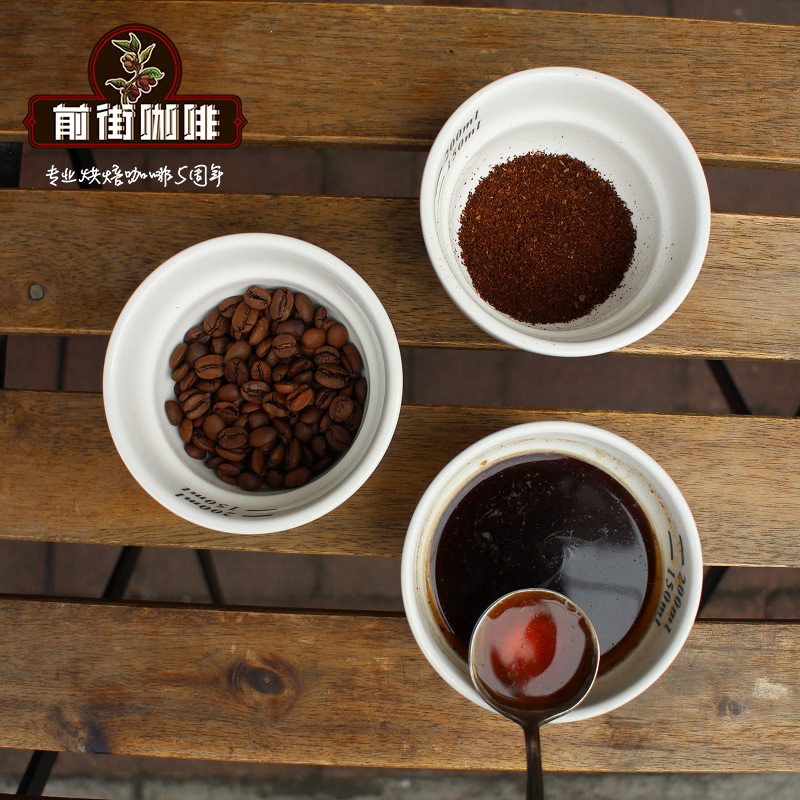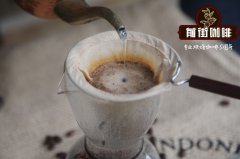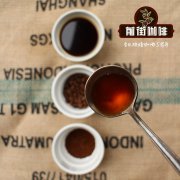Effect of coffee bean treatment on how coffee beans are ground into powder can coffee beans be brewed directly

Professional coffee knowledge exchange more coffee bean information please follow the coffee workshop (Wechat official account cafe_style)
On the relationship between the treatment of raw coffee beans and how to eat coffee beans
First of all, we need to talk about where the coffee comes from.
Coffee trees are the same as ordinary trees.
Bear fruit
After growing into a coffee fruit, the seeds inside are called coffee beans.
Remove the peel, pulp and pectin from the coffee fruit
This process is called raw bean processing.
However, the raw coffee beans are treated in different ways.
To a large extent, determine the taste and quality of coffee.
Today, let's talk about the advantages and disadvantages of each major treatment method!
Solarization method
The most primitive and simple
Arabs began to use the sun to treat the fruits of coffee more than 1000 years ago in the 11th century.
Treatment process
Pour the coffee fruit into the sink, according to the buoyancy, you can know that the very light inferior coffee fruit floats on the surface, and the full fruit will sink to the bottom of the water, so that the good coffee beans can be separated.
The tile is exposed to the sun, often flipped over, picking out defects.
When the water content in the coffee beans is reduced to 10%-14%, the peel pectin can be knocked off with a sheller, and the whole solarization method is complete.
Shortcoming
The sun method is completely dependent on heaven for food, and the dryness of coffee fruit is more difficult to control. If the sun is not clean, it is easy to mix with impurities. In addition, it is also very easy to get moldy in the process of drying.
Advantages
Save water, only the first process needs water.
The sun will also produce a super unique flavor, maybe it is the taste of nature.
Flavor
The coffee beans in the sun have a stronger flavor, wine-like fermented taste and sweet taste.
Wash with water to give a clean sour smell.
Because of the shortcomings of the solarization method, the Dutch invented the washing method in the mid-18th century, which was widely favored. The biggest difference from the sun method is that it uses fermentation to remove the skin.
Treatment process
As in the first step of solarization, get rid of shoddy beans first.
Then use pulping machine (pulp planer) to remove the peel and pulp of the coffee fruit.
Throw it into the sink to ferment for 16-36 hours, and the fermentative bacteria dissolve the pectin.
In order to remove the moldy coffee beans, the coffee beans will be washed again.
The coffee fruit is dried by machine so that the moisture content is reduced to 10% Murray 14%. Finally, the use of shelling machine to remove the silver skin on the coffee beans can be completed.
Shortcoming
Water is wasted, and the process is more tedious and costly.
Advantages
After layers of screening and cleaning, the appearance and taste will be cleaner and more uniform. And because the flesh is removed in the first place, you don't have to worry about mildew as much as the sun.
Flavor
Washed beans usually have bright and clean acidity because they ferment acid in the fermentation tank.
Beat by half-washing method, and all the pectin in the peel will be knocked out.
Because the water washing method requires too much water, the semi-washing method was born out of thin air. It is a mixture of sun exposure and water washing, and it is also a compromise between the two.
Treatment process
First of all, it is the same as the above two treatments, first remove shoddy beans.
Then pour the coffee fruit into the pulping machine (pulp planer) to remove the peel and pulp.
In order to reduce water consumption, the semi-washing method uses demucilager (pectin scraper) to remove pectin.
Finally, the coffee fruit is dried or exposed outdoors.
Reduce the water content of the coffee fruit to 10% Murray 14%, and then use the sheller to remove the silver skin sticking to the coffee beans, that is, complete!
Shortcoming
The process is still very tedious.
Advantages
With the cleanliness of the washing method, it does not need to consume a lot of water.
Flavor
The semi-washing method had the least influence on the quality, and the sour taste of coffee was lower than that of washed beans and higher than that of sun-washed beans; the sweet taste was lower than that of honey treatment, but the cleanliness was better than that of honey treatment, and the flavor was between honey treatment and water washing.
Honey treatment honey, pectin honey produces sugar
Play GIF
Honey treatment (Miel Process in Spanish) is also called half-sun treatment. It is the most fashionable and characteristic treatment in recent years, and the main difference between it and the sun method is whether the pulp is removed before or after the sun.
Treatment process
The first step is still to remove shoddy beans.
Then through pulping machine (pulp planer), the peel and pulp are removed.
After the sun exposure, the water content of the coffee fruit was reduced to 10% Murray 14%.
Finally, you can use the sheller to remove the silver skin sticking to the coffee beans.
Shortcoming
This is the most complicated way to deal with it.
Advantages
It can not only solve the mildew problem, but also save water.
Flavor
Sweet and sour, and mellow.
The animal ferments and eats, pulls out the gentle mellow fragrance
Do you remember Kopi Luwak?
Principle: use the lactic acid bacteria and digestive juices in the digestive tract of animals to remove the pectin from the pulp and the surface of the pods. The beans are excreted with feces. After cleaning, they are precious grains of fermented beans in the body. Fermented beans in animals include not only civets, but also Phoenix-crowned pheasants, monkeys and elephants, but none of the latter have formed a scale, only civets stand out.
Play GIF
At first, it was because the musk cat haunted at night, relying on its eyesight and sense of smell, chose the reddest coffee fruit to eat, and was not interested in the half-unripe fruit, so the beans excreted were all ripe and well-ripe. These fecal beans are washed and then baked, killing all bacteria. The most important feature is that the flavor is gentle and the taste is doubled, while the fundamental flavor depends on the variety of coffee eaten by the civet.
In New York, a pound of civet coffee costs $500, while in Hong Kong, a cup of civet costs $50. Later, people discovered this business opportunity and began to raise civets in large quantities and keep feeding coffee beans, thus producing more Kopi Luwak for profit.
To sum up, the following table shows the comparison of the various treatments:
Semi-washing method is less, medium, sour and sweet balance.
The honey treatment method has obvious balanced sweetness of sour and sweet.
In fact, different producing areas will "adjust measures to local conditions", using the most appropriate way of fruit treatment, a coffee bean comes to your cup, coffee farmers should not only consider the cost, but also what kind of treatment this coffee fruit is suitable for. Make its flavor more prominent and delicious.
Important Notice :
前街咖啡 FrontStreet Coffee has moved to new addredd:
FrontStreet Coffee Address: 315,Donghua East Road,GuangZhou
Tel:020 38364473
- Prev

What's the difference between washed coffee beans and sun-dried coffee beans? How to make a difference when coffee beans are ground into powder?
Professional coffee knowledge exchange more coffee bean information please follow the coffee workshop (Wechat official account cafe_style) do you know? Coffee, known as the black gold industry, can consume 500 billion cups a year! The world produces about 8.4 billion kilograms of coffee beans every year, trading futures volume is second only to oil, higher than all staple grains, the output value is quite amazing. In Taiwan, the average person per person
- Next

Coffee bean wholesale Qianjie coffee product coffee bean list coffee raw / cooked bean wholesale price report
Professional coffee knowledge exchange more coffee bean information please follow the coffee workshop (Wechat official account cafe_style) Qianjie Cafe Tel: 20-38364473 website: www.makecoffee.cn address: 10 Baoqian Street, Da Road, Yuexiu District, Guangzhou City
Related
- Guji coffee producing area of Guji, Ethiopia: Humbela, Shakiso, Wulaga
- What is the most expensive variety of Qiloso in BOP multi-variety group?
- How to store the coffee beans bought home?
- Why are Yemeni coffee beans so rare now?
- Ethiopian Sidamo all Red Fruit Sun Sun Santa Vini Coffee beans
- SOE is mostly sour? What does it mean? Is it a single bean? what's the difference between it and Italian blending?
- Is Italian coffee beans suitable for making hand-brewed coffee?
- How to choose coffee beans when making cold coffee? What kind of coffee beans are suitable for making cold coffee?
- Just entered the pit to make coffee, what kind of coffee beans should be chosen?
- Can only Japan buy real Blue Mountain Coffee? What are authentic Jamaican Blue Mountain coffee beans?

